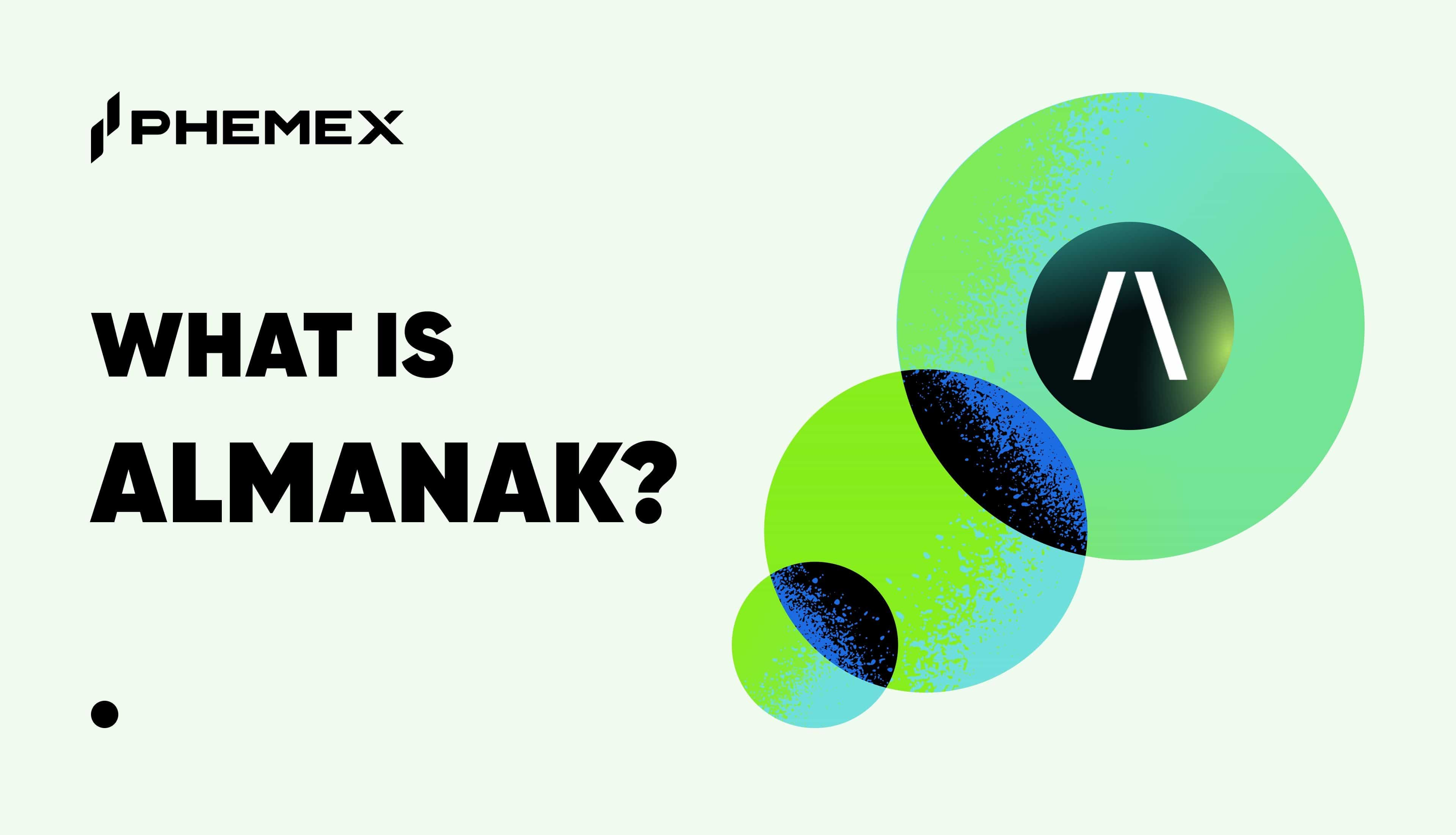Introduction: Solving DeFi’s Fragmentation Problem
Despite the revolutionary promises of cryptocurrency—decentralization, open access, and a fairer financial system—the industry remains volatile and fragmented. For traders and users, navigating decentralized finance (DeFi) often involves high fees, slow transactions, and the complex task of moving assets between siloed blockchain networks. While stablecoins have proven their utility beyond speculation, their impact is often confined to the limitations of their underlying ledger. A stablecoin on a single network can only use assets from that network as collateral, fundamentally restricting its scalability and adoption.
This is the challenge Acala was built to solve. It envisions a future where cross-chain communication is as seamless as the internet is to an intranet. Acala is a first-of-its-kind decentralized finance consortium, delivering a specialized, interoperable protocol to serve as Polkadot’s primary DeFi building block. By creating a liquidity layer that connects multiple blockchains, Acala empowers a new generation of financial applications that are secure, scalable, and truly decentralized. This guide provides an in-depth exploration of Acala, its technology, its native token, and its potential role in the future of Web3 finance.
Ready to explore Polkadot's DeFi ecosystem? Trade ACA on Phemex today!
Quick Facts: Acala (ACA)
-
Ticker Symbol: ACA
-
Chain: Polkadot Parachain
-
Primary Use Case: Powering Polkadot's DeFi hub through fees, governance, and staking.
-
Circulating Supply: ~1.17 Billion ACA
-
Total Supply: 1.6 Billion ACA
-
Consensus: Nominated Proof-of-Stake (via Polkadot Relay Chain)
-
Availability on Phemex: Yes (Spot)
What Is Acala (ACA)? The Financial Heart of Polkadot
So, what is Acala? At its core, Acala (ACA) is an Ethereum-compatible Layer-1 blockchain platform that serves as the central liquidity and financial hub for the Polkadot ecosystem. It is not just another general-purpose blockchain; it is a highly specialized "appchain" designed specifically to host and optimize financial applications. This focus allows it to provide services that are faster, cheaper, and more efficient than those on broader networks.
Built using the Substrate framework, Acala operates as a parachain—an independent but interconnected blockchain—that links to the main Polkadot Relay Chain. This unique structure grants it two critical advantages:
-
Shared Security: Acala leverages Polkadot’s robust and decentralized validator set for its security, eliminating the need to build and secure its own network from scratch. This allows the Acala team to focus entirely on developing its financial products.
-
Native Interoperability: As part of the Polkadot network, Acala can seamlessly communicate and transfer assets with other parachains, creating a truly interconnected ecosystem of blockchains.
Acala explained simply, it offers a suite of core DeFi primitives out-of-the-box:
-
Acala Swap: A decentralized exchange (DEX) for trustless token swaps.
-
The Honzon Protocol: The engine behind aUSD, a decentralized, multi-collateral stablecoin pegged to the US dollar.
-
The Homa Protocol: A liquid staking protocol that allows users to stake their Polkadot (DOT) tokens while receiving a liquid, tradable token (LDOT) in return.
By providing these foundational building blocks, Acala aims to be the go-to platform for developers building DeFi applications on Polkadot and the primary gateway for users looking to access cross-chain financial services.
How Many ACA Tokens Are There? A Look at the Tokenomics
The tokenomics of Acala (ACA) were carefully designed to support a sustainable and secure network economy.
-
Max vs. Circulating Supply: Acala has a fixed maximum supply of 1.6 billion ACA tokens. This hard cap ensures that the token is not infinitely inflationary, providing a degree of scarcity. The initial supply was minted at the mainnet launch, with a portion distributed to crowdloan participants who helped Acala win its parachain slot, as well as to the team, investors, and the Acala Foundation treasury to fund ongoing development. The circulating supply, which is the number of tokens available on the market, gradually increases as vested tokens are released.
-
Inflationary vs. Deflationary Mechanisms: While new tokens may enter circulation through emissions, Acala incorporates a powerful deflationary mechanism. The network's protocols, particularly the Honzon stablecoin protocol, generate fees called "Stability Fees" from users who borrow aUSD. A portion of these fees, paid in ACA, is burned—meaning they are permanently removed from the supply. As the adoption and usage of aUSD grow, the burning rate increases, creating deflationary pressure that can counteract token emissions and potentially increase the scarcity of ACA over time.
-
Minting and Distribution: The genesis block of the Acala network minted the initial supply. The distribution was allocated to secure the network's long-term health and decentralization, rewarding early supporters and ensuring the development team had the resources to fulfill its roadmap. This strategic allocation is crucial for aligning the incentives of all network participants, from users and developers to investors.
What Does the ACA Token Do? The Three Pillars of Utility
The ACA token is the lifeblood of the Acala network, serving three primary functions that are critical for its operation, security, and evolution. This makes the Acala use case multifaceted and integral to the ecosystem.
1. Network Utility and Fees
ACA is the native utility token used to pay for all activities on the network.
-
Transaction Fees: Every operation, from a simple token transfer to a complex smart contract interaction, requires a fee paid in ACA. Acala’s specialized infrastructure allows these fees to be extremely low.
-
Stability Fees: Users who mint aUSD stablecoins by locking collateral in a Collateralized Debt Position (CDP) must pay an interest rate, known as a stability fee. This fee is paid in ACA and contributes to the token-burning mechanism.
-
Liquidation Penalties: In the event that a user's collateral value drops below the required threshold, a penalty fee is charged during liquidation, which is also settled using ACA.
2. Governance
Acala is governed by its community of ACA holders. This on-chain governance system gives token holders the power to shape the future of the protocol. By holding and staking ACA, users can:
-
Vote on Proposals: Propose and vote on network upgrades, changes to fee parameters, or the addition of new collateral types for minting aUSD.
-
Elect Council Members: Participate in electing the Acala Council, a body responsible for representing token holders and making operational decisions.
This decentralized governance model ensures that the platform evolves in alignment with the interests of its users, not a centralized entity.
3. Network Security and Staking
ACA plays a direct role in the economic security of the network. It can be staked to deploy nodes and collators, which are responsible for collecting and processing transactions on the Acala parachain before submitting them to the Polkadot Relay Chain validators. Furthermore, staked ACA can be used as a last-resort backstop to recapitalize the system in the unlikely event of a shortfall within its stablecoin protocol, adding another layer of security to the entire ecosystem.
Acala (ACA) vs. Moonbeam (GLMR): A Tale of Two Parachains
Within the Polkadot ecosystem, Acala and Moonbeam are two of the most prominent and important parachains. While they are both foundational, they serve different primary purposes and are designed with distinct philosophies. Acala is a specialized DeFi hub, whereas Moonbeam is a general-purpose smart contract platform focused on Ethereum compatibility.
Here is a breakdown of their key differences:
| Feature | Acala (ACA) | Moonbeam (GLMR) |
| Primary Goal | To be the all-in-one, specialized DeFi and liquidity hub for Polkadot. | To be the easiest on-ramp for Ethereum projects to expand to Polkadot, acting as a multi-chain smart contract hub. |
| Core Offering | A curated suite of built-in financial products: a stablecoin (aUSD), liquid staking (Homa), and a DEX. | A general-purpose smart contract platform that provides a fully Ethereum-compatible environment for developers to build any kind of dApp. |
| Specialization | An application-specific blockchain ("appchain") optimized entirely for financial services. | A more generalized infrastructure-focused blockchain designed to mirror Ethereum's environment as closely as possible. |
| EVM Approach | Features the "Acala EVM+," allowing developers to deploy Solidity contracts while also accessing Substrate-native features and its built-in DeFi primitives. | Offers a fully compatible EVM implementation that mirrors Ethereum's Web3 RPC, accounts, and keys, making migration seamless for Ethereum developers. |
| Target Audience | DeFi developers and users looking for a capital-efficient, integrated financial ecosystem. | Ethereum developers who want to deploy their existing dApps to Polkadot with minimal code changes to tap into a multi-chain user base. |
| Ecosystem Philosophy | Provides foundational DeFi Legos "out-of-the-box" for other protocols to build upon. | Provides the underlying infrastructure and tools for developers to build their own DeFi protocols (and other dApps) from the ground up. |
In short, Acala provides a ready-made suite of financial tools, while Moonbeam provides the open workshop for developers to build whatever they want, with a strong focus on those already familiar with Ethereum. The two are highly complementary and are even connected via XCM to allow assets like ACA, GLMR, and aUSD to move between their ecosystems.
The Technology Behind Acala: A Modular Financial Machine
Acala’s technical architecture is a sophisticated, modular system designed for maximum efficiency and security. It is composed of several key protocols and modules that work in concert.
The Honzon Protocol and the aUSD Stablecoin
The centerpiece of Acala is the Honzon Protocol, which governs the creation and management of the aUSD stablecoin. Inspired by MakerDAO, it uses a system of Collateralized Debt Positions (CDPs). Here’s how it works:
-
Deposit Collateral: A user locks up an accepted crypto asset (like DOT, LDOT, BTC, or ETH) into a smart contract.
-
Mint aUSD: Based on the value of the collateral, the user can mint a certain amount of aUSD tokens. The position must be over-collateralized, meaning the value of the locked assets is significantly higher than the value of the minted aUSD (e.g., 150% collateralization ratio).
-
Use aUSD: The user can then use aUSD across the DeFi ecosystem for trading, lending, or yield farming.
-
Repay and Reclaim: To unlock their original collateral, the user must repay the aUSD debt plus a small stability fee.
This multi-collateral system allows aUSD to be backed by a diversified basket of assets from across the Polkadot ecosystem and beyond, making it more robust and scalable than single-collateral stablecoins.
The Homa Protocol: Unlocking Staked Liquidity
Staking is crucial for securing Proof-of-Stake networks, but it traditionally comes with a major drawback: staked assets are locked and cannot be used. The Homa Protocol solves this by offering liquid staking. Users can stake their DOT tokens with Homa and receive a tokenized derivative, LDOT, in return. LDOT represents their claim on the underlying staked DOT and continues to earn staking rewards, but it remains liquid and can be used as collateral to mint aUSD, traded on Acala Swap, or used in other DeFi applications.
Core Runtime Modules
Acala is built from several specialized modules that handle specific functions:
-
Oracle: A decentralized price feed module that securely provides real-time price data for assets on the network. This is crucial for managing CDPs and executing liquidations accurately.
-
CDP Engine: Manages the risks associated with the stablecoin, such as enforcing stability fees, collateral ratios, and debt ceilings.
-
Auction Manager: Handles collateral, surplus, and deficit auctions to maintain the stability of the aUSD peg and the overall health of the protocol.
-
Acala EVM+: This is Acala's Ethereum-compatible virtual machine. It allows developers to deploy their existing Solidity smart contracts directly onto Acala, giving them access to a faster, cheaper, and interoperable environment without having to rewrite their code.
Team & Origins: Pioneers of the Polkadot Ecosystem
Acala was founded in 2019 through a collaboration between two prominent teams in the Polkadot ecosystem: Laminar, a team focused on building synthetic asset and margin trading protocols, and Polkawallet, a leading mobile wallet for Polkadot. This union combined deep expertise in both DeFi protocol development and user application design.
The project was one of the first to receive multiple grants from the Web3 Foundation, the organization behind Polkadot, recognizing its potential to become a cornerstone of the ecosystem. Acala further solidified its position by winning the very first parachain auction on Polkadot in November 2021, a highly competitive process where projects bid for a limited slot to connect to the Polkadot Relay Chain. This victory was backed by a massive community crowdloan, demonstrating widespread support for its vision.
The project is also supported by a roster of top-tier venture capital firms, including Pantera Capital, Polychain Capital, and Coinbase Ventures, providing it with the strategic backing needed to navigate the competitive crypto landscape.
Key News & Events Shaping Acala’s Journey
-
November 2021 - Parachain Auction Victory: Acala made history by winning the first-ever parachain slot on Polkadot, officially securing its place as a core hub in the ecosystem.
-
February 2022 - aUSD Stablecoin Launch: The platform officially launched its native, decentralized, multi-collateral stablecoin, aUSD, bringing a critical piece of financial infrastructure to Polkadot.
-
August 2022 - aUSD Depeg Incident: A misconfiguration in a liquidity pool was exploited, leading to the erroneous minting of over a billion aUSD and causing the stablecoin to de-peg. The Acala community responded swiftly through governance, voting to trace and burn the erroneously minted tokens to restore the peg.
-
June 2023 - Acala 2.0 "Exodus Upgrade": Acala announced a major network upgrade focused on establishing itself as a universal liquidity and application layer for Web3, enhancing its multi-chain capabilities and interoperability features.
-
Ongoing - Wormhole Bridge Integration: Acala integrated the Wormhole bridge, a leading cross-chain messaging protocol, enabling the seamless transfer of assets and data from other major blockchains like Ethereum, Solana, and BNB Chain.
For the latest news about Acala, stay tuned to the Phemex blog and announcements.
Is Acala (ACA) a Good Investment? A Balanced Perspective
Deciding whether Acala (ACA) is a good investment requires a careful analysis of its potential, its risks, and its position within the broader market.
The Bull Case: Acala’s Investment Potential
-
First-Mover Advantage on Polkadot: As the first DeFi hub to launch on Polkadot, Acala is deeply integrated into the ecosystem and is positioned to capture a significant share of its economic activity.
-
Strong Technological Foundation: Its specialized architecture, liquid staking protocol (Homa), and robust multi-collateral stablecoin (aUSD) provide real, tangible utility. The Acala EVM+ also makes it highly attractive to a vast pool of Ethereum developers.
-
Interoperability Focus: In a future that is undeniably multi-chain, Acala’s core focus on connecting blockchains and providing cross-chain liquidity is a powerful long-term value proposition.
-
Deflationary Tokenomics: The mechanism that burns ACA tokens from stability fees could lead to increased scarcity and value if the adoption of aUSD grows significantly.
The Bear Case: Risks and Challenges
-
Dependence on Polkadot: Acala’s success is intrinsically linked to the growth and adoption of the entire Polkadot ecosystem. If Polkadot fails to gain significant market share, Acala's growth could be limited.
-
Intense Competition: The DeFi and stablecoin markets are incredibly competitive. Acala competes with established giants on other chains (like MakerDAO on Ethereum) and other emerging Layer-1 platforms.
-
Past Security Incident: The aUSD de-pegging event in 2022, while resolved through governance, may have impacted some users' trust in the protocol's stability and security mechanisms.
-
Market Volatility: Like all altcoins, the ACA price is subject to extreme market volatility and broader macroeconomic trends. Regulatory uncertainty surrounding DeFi and stablecoins also remains a persistent risk.
Conclusion:
Acala represents a technologically sophisticated and ambitious project with a clear vision to become the financial heart of a major blockchain ecosystem. Its potential is significant, but it faces formidable challenges. An investment in ACA is a bet on the growth of Polkadot and the Acala team's ability to execute its vision in a highly competitive market.
Disclaimer: This section is for informational purposes only and does not constitute financial advice. Crypto trading involves significant risks; only invest what you can afford to lose.
How to Buy Acala (ACA) on Phemex
Phemex offers a simple and secure platform for trading ACA. If you’re wondering how to buy ACA, follow these steps:
-
Create or Log In to Your Phemex Account: Sign up if you're new, or log in to your existing account.
-
Fund Your Account: Deposit cryptocurrency or buy it with fiat currency (e.g., USD, EUR).
-
Navigate to Spot Trading: On the Phemex platform, find the "Spot Trading" section.
-
Select the ACA/USDT Pair: Use the search bar to find the ACA/USDT trading pair.
-
Place Your Order: Choose your order type (Market, Limit, etc.), enter the amount of ACA you wish to purchase, and confirm the transaction. Your ACA tokens will appear in your Phemex wallet once the order is filled.
FAQs
1. What is Acala (ACA) used for?
Acala is a multi-functional DeFi hub on Polkadot. The ACA token is used for three primary purposes: paying for network transaction fees and aUSD stability fees, participating in on-chain governance to vote on the platform's future, and helping secure the network through staking and other mechanisms.
2. Is ACA a good token?
The long-term value of the ACA token depends on the Acala network's ability to attract users, developers, and liquidity. Its strong utility, deflationary aspects, and central role in the Polkadot ecosystem are positive factors. However, it is a high-risk asset subject to market volatility, competition, and risks tied to the Polkadot ecosystem's growth. Always conduct your own research before investing.
3. What makes Acala unique?
Acala’s uniqueness lies in its application-specific design for finance. Unlike general-purpose blockchains, it has core DeFi primitives like a stablecoin protocol, liquid staking, and a DEX built into its base layer. This, combined with Polkadot's shared security and interoperability, allows it to offer a highly efficient, secure, and user-friendly cross-chain financial platform.
4. What is the difference between Acala and Karura?
Karura is Acala's "canary network" on Kusama, Polkadot's sister chain. Karura serves as a live testing ground where new features and upgrades are deployed and battle-tested in a real economic environment before being launched on Acala. Think of Karura as the faster, more experimental version, while Acala is the more stable and secure mainnet.








